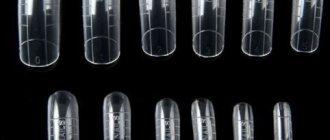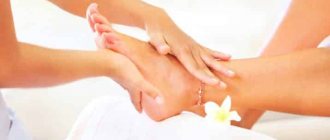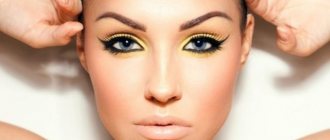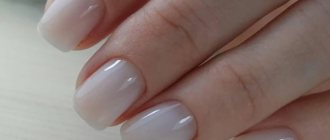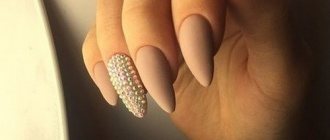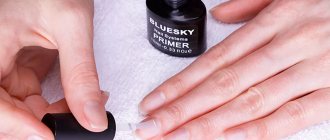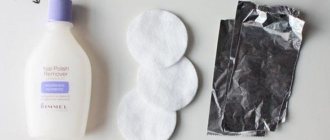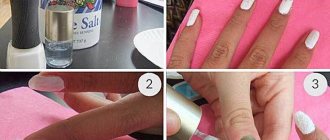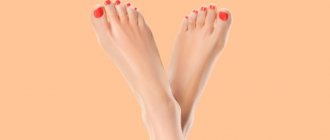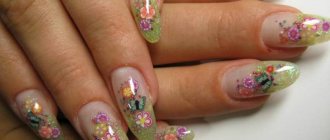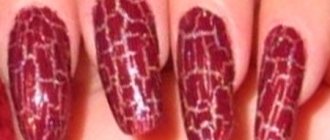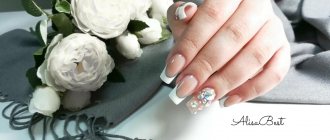The quality of nail extensions or design begins with the correct selection of products that will be applied to the nails at each stage of the extension process.
Artificial modeling of nail plates or their modern decoration, in addition to the basic ones, involves the use of many special additional preparations, such as a degreaser, primer, bonder, dehydrator and others. The desire to save money on them can lead to poor-quality manicure work.
Why degrease your nails?
Using a degreaser
Before you start extensions or design, you need to prepare the nail, remove particles of sebum, dust, and food debris from it. This is necessary so that the adhesion to the gel is subsequently flawless. If you don't degrease the nail plate well enough, the entire manicure can peel off very quickly.
To perform this function, manicurists use a special liquid - degreaser .
After degreasing the surface of the nail, do not touch it with your fingers! This will leave a microscopic greasy trace, and the degreasing effect will be neutralized.
Degreaser and dehydrator
Nail dehydrator
A degreaser is sometimes confused with a dehydrator . But these are two completely different means, each of which has its own tasks.
The dehydrator is designed to remove any unnecessary moisture from the nail plate , not only from its surface, but also from deep. Water left under artificial turf can ruin not only the master’s work, but also the nail.
To avoid troubles, it is not recommended to take baths or use moisturizing creams or oils before artificial extensions: the nail plate must be dry .
Primer and bonder
Primer and bonder
The next pair of terms that confuse inexperienced fashionistas: primer and bonder . These funds also have nothing in common with each other.
To make the adhesion between the microscales of the nail and the polymer material of the future coating stronger, of primer : acidic and acid-free . It is applied after a dehydrator and degreaser. It is quite an aggressive product, so avoid getting it on your skin.
A tool intended for fastening, adhesion, and tying together layers during the modeling process is called a bonder or bond (from the English verb to bond).
The difference between a degreaser and similar products
Thus, the degreaser has no analogues: all of the listed products have their own functions, as well as their own order of application. Below is a summary table of the properties of these tools:
| Degreaser | Dehydrator | Primer | Bonder, bond |
| Dissolves fat | Dries the nail surface | Raises microscopic scales | Strengthens adhesion between layers |
| Removes possible food residues | Removes excess moisture from the nail thickness | Removes residual grease and moisture | |
| Removes dirt and dust |
What is a degreaser, its types
A degreaser is a special substance that helps prepare the surface of the nail plate for applying a decorative coating.
The product performs 3 main functions:
- Removes traces of dirt.
- Makes the nail surface smoother.
- Eliminates natural shine.
Manipulations with nails, for example, covering them with gel polish, require good adhesion of artificial products to the surface. Due to physiological processes, the plate is constantly exposed to moisture. In addition, pathogenic microorganisms and bacteria accumulate on its surface. Over time, this can lead to infection, because the nail plate is in close proximity to the skin. Also, dirt deposits and accumulated grease prevent stable adhesion of the surface to the decorative coating.
Before applying paints, it is necessary to thoroughly treat the surface with a degreaser.
You can purchase the products that professional craftsmen prefer on your own. However, a wide range of drugs can be confusing for a beginner who does not have sufficient experience.
Conventionally, all drugs can be divided into 2 groups:
- Acidic. Their distinctive feature is a pronounced effect after use. They allow you to clean your nails from the smallest particles of dust and dirt. Acidic substances provide the best adhesion of the decorative coating and marigolds.
- Acid-free. This is a more gentle option for degreasers. They delicately remove traces of dust and dirt. At the same time, they do not have a negative effect on the surface of the nails. Experts recommend using them for those who prefer to change the design frequently.
Reference. Experienced manicurists claim that the gentle option is more suitable for frequent use. You should resort to an acidic product when the nail plate is exposed to aggressive environmental influences.
In addition, all professional products can be classified according to their intended purpose:
- Primer. This is a universal preparation that thoroughly removes dirt and additionally loosens the top layer of the nail plate. This ensures the best possible grip. The peculiarity of using the product is that after application it cannot be touched. Otherwise, the procedure will have to be repeated.
- Dehydrator. Belongs to the group of delicate drugs. Its main purpose is to remove excess liquid. Of course, it is not as effective as a primer. However, it has a more gentle effect and does not destroy the nail plate. The main feature of the drug is that the gel polish must be applied immediately after using the dehydrator. Otherwise, the water balance will be restored, and the degreasing procedure will need to be repeated.
- Klinser. The purpose of the drug is to remove the sticky layer that forms after a manicure. But there are universal options that can be used at different stages of a manicure.
Reference. When choosing the most suitable option, you need to rely on personal preferences. The main condition is that the product must be of high quality, so you should purchase products from reputable manufacturers.
Composition of nail degreaser
Select the appropriate volume of degreaser
Only alcohols can dissolve fat efficiently without causing damage to living tissue. Therefore, the degreaser is based on isopropyl alcohol and ethyl acetate . May contain methyl ethyl ketone for better dissolution and increased volatile properties, which ensures quick drying.
In addition, for additional care of the plate, plant extracts and vitamins . The presence of oil components is excluded. This is why ordinary nail polish remover is not suitable as a degreaser - there are always oil additives to nourish the nail plate and give it elasticity.
Why is isopropyl alcohol the best base for a degreaser? It is easily mixed with water components in any ratio and has excellent disinfectant properties.
The degreaser looks the same as clear varnish: it is a transparent liquid.
Effect of a degreaser: what procedures is it used for?
The degreaser is used for all types of manicure where the master uses an artificial coating: when applying gel polish, shellac, gel extensions .
In addition to preparing the nail plate with a degreaser, remove the sticky layer of gel , and also wash the brushes after extensions, wipe the reflectors of the UF lamp and its other parts. The degreaser acts as an antiseptic for quick cleaning of instruments without causing rust during prolonged use.
See how to prepare your nails for gel polish using a degreaser.
Procedure
In order for your manicure to last for a long time, you need to carefully prepare the surface. This requires:
- Hands should be washed with soap and any remaining moisture removed with a towel. In this case, it is necessary not only to rinse your hands, but to hold them in a warm soapy solution for five minutes. This is necessary to make the cuticle softer.
- Using a special pusher, the softened cuticle should be pushed back and carefully trimmed.
- You should also remove all dead skin. This can be done with scissors or a trimmer.
- Using a ceramic nail file, thoroughly polish the entire surface. This is necessary to eliminate natural shine.
- The resulting dust should be removed with a special brush.
- The brush must be lowered into the bottle with the product.
- The product must be applied in an even layer, starting from the cuticle.
- After application, you need to wait a certain time until the product dries completely.
- The last stage is applying the base and decorative coating.
The secret of a quality manicure lies not only in experience and the use of quality products, but also in strict adherence to all stages of the procedure, so do not neglect degreasing the nail plates. In this case, it is advisable to use special substances, because home remedies can have a negative effect not only on the nail plate, but also on the skin.
Can a primer or bonder be used instead of a degreaser?
Any of these products will clean the nail plate and prepare it for coating. But only a degreaser guarantees the removal of all microscopic particles of fat that can spoil a beautiful design .
In addition, only a degreaser will not spoil the gloss of the top coat.
Manufacturers have made an attempt to combine a degreaser and a primer in one product, for example Naomi PREP Nail, Nailite Nail, Scrub Fresh CND, Fresher Kodi Nail and others. These and other brands can be purchased in special professional manicure stores.
Check out reviews of some brands:
How to use degreaser: precautions
The degreaser is applied to the nails with a brush, which is provided in the bottle with the product. If there is none, wipe your nails with a cotton pad soaked in degreaser. Treat the nail carefully so as not to leave any areas uncovered by the degreasing liquid.
Like any chemical, degreaser must be used carefully and follow the instructions for use .
- Do not allow the degreaser to come into contact with the mucous membranes of the nose, mouth or eyes . Rinse thoroughly the area where the mucous membrane comes into contact with the product.
- Remember that the grease solvent has a rather pungent odor, to which you may be allergic .
- After use , carefully close the lid of the product and remove it away from sources of heat and bright light .
Ask the person you are going to cover if he or she suffers from allergic reactions to similar substances. When you use a product on yourself, make sure it is safe for you too. If you experience an allergic reaction to the degreaser, consult a doctor immediately.
What to replace at home
Those who love extreme savings can replace special products for professional use with materials available at home.
The use of improvised products as a degreaser does not guarantee the safety of nails and high quality of design.
How can you replace degreaser at home?
- Soap is a degreaser. You can wash your nails thoroughly with soap before modeling.
- Another popular remedy is rubbing alcohol . It does an excellent job of removing grease and dirt, but it dries out the nail tissue too much. Medical wipes for injections have a milder effect .
- A substitute for medical alcohol is vodka , diluted ethyl alcohol or cologne . It is not difficult to guess that this method is dubious and dangerous.
- lemon as a degreaser , believing that it is beneficial for nails due to the vitamin content it contains. There is some truth in this, but do not forget that lemon, although weak, is an acid that over time corrodes nails, just as it can dissolve an egg shell with prolonged contact.
- Boric acid or vinegar is sometimes used as a degreaser substitute .
Do not use acetone as a degreaser! It can harm not only the nail plate, but also the skin around the nail.
Professional manicure products have been developed and tested for years, they take into account all the risks and achieve the desired intensity of impact.
Nail degreaser is one of the important and necessary tools for creating nail designs along with dehydrator, primer, bonder and others. In order to remain satisfied with the quality of work, the best choice is to trust professional products from well-known brands, which can be purchased in specialized salons.
More interesting articles:
How can you replace a professional degreaser?
Sometimes you need to quickly update your manicure, but you don’t have the necessary medications on hand. It is not recommended to skip some stages of manicure. After all, if you do not prepare the plate for gel polish, it will begin to peel off quickly. As a result, the nail may become damaged. Fortunately, you can replace professional medications with improvised means that can be found in every housewife’s home. An alternative could be:
- Medical alcohol. One of the most accessible and inexpensive options for degreasers. In addition, it has an additional effect - it disinfects small wounds and microcracks that may appear after the cuticle removal procedure. The disadvantages of the product include the fact that with frequent use it significantly dries out the skin, so it is not suitable for regular use.
- Boric acid. The product contains alcohol, so it does an excellent job of degreasing surfaces. Boric acid dries out the skin less than medical alcohol. However, frequent use of the product has a negative effect on the epidermis.
- Nail polish remover. Acetone not only dissolves varnish, but also perfectly degreases surfaces. But it dries out the epidermis greatly, so experts do not recommend using nail polish remover as a degreaser.
- Lemon acid. Often, citrus juice or citric acid is used to remove excess fat. But these products cannot cope with residual moisture, so the surface will need to be thoroughly dried before applying gel polish.
